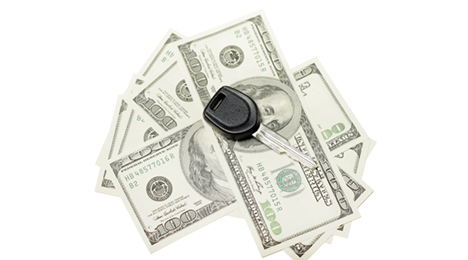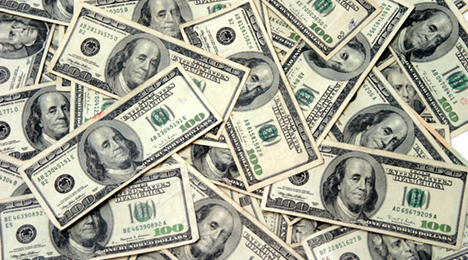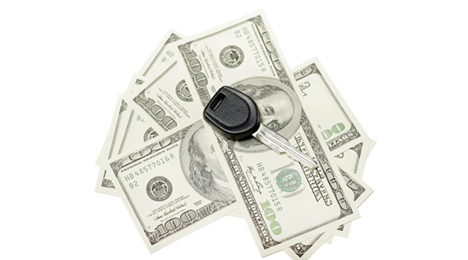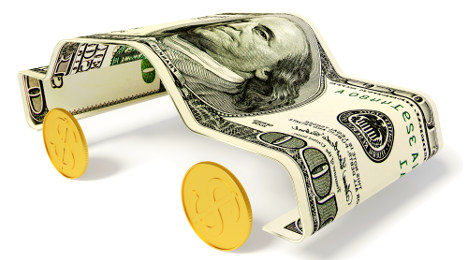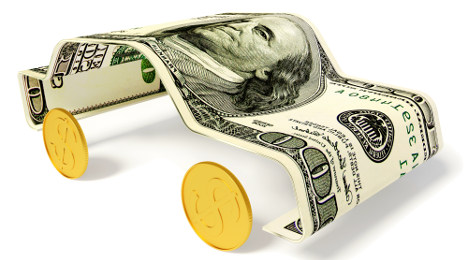The latest asset-backed securities analysis from S&P Global Ratings showed weakening performances for both the U.S. prime and subprime auto loan ABS sectors in August — with net losses, recovery rates and 60-plus-day delinquencies all worsening month-over-month.
Analysts added that performance for both sectors also continued to weaken year over year, with only prime recovery rates improving from a year ago.
According to the report released on Tuesday, U.S. Auto Loan ABS Tracker: September 2016, analysts noticed losses have increased in both sectors for the past three months. The prime net loss rate in August was 0.68 percent, rising from 0.61 percent in July and 0.50 percent in August of last year. The subprime net loss rate increased to 8.35 percent in August, up from 7.53 percent in July 2016 and 6.60 percent in August of last year.
S&P Global Ratings explained the year-over-year increase of 175 basis points in subprime losses is largely due to deep subprime pools representing a greater percentage of the outstanding collateral in its index.
Despite that year-over-year downward movement, analysts pointed out that credit enhancement for 'AAA' rated classes has generally kept pace with the weakened performance.
“This collateral trend indicates weaker credit quality,” S&P Global Ratings said. “The auto industry has also become intensely competitive, which has led to price competition, loosening of credit standards and higher charge-offs.”
In more recent vintages, analysts indicated much of the increase in losses is due to a greater share of total issuance from high-loss issuers. Keeping in step with the weakened collateral performance, S&P Global Ratings noted that its loss expectations for subprime auto loan ABS have generally increased since 2011 as well.
“While our loss expectations are at historically high levels since 2011, our analysis shows that credit enhancement for classes rated 'AAA' in subprime auto loan ABS transactions has increased,” analysts said. “For these classes, we calculated the weighted average initial credit enhancement at closing and the break-even amount of credit enhancement based on transaction-appropriate assumptions for prepayment rates, loss timing, and recovery rates to support 'AAA' ratings.
“Both the initial percentage of hard credit enhancement (excluding excess spread) at closing and the weighted average break-even level increased to higher levels for 'AAA' rated classes in transactions issued in 2015 and 2016 compared with those issued in prior periods,” analysts continued.
Turning back to the latest data, S&P Global Ratings also offered a supplement to its subprime index — creating a modified subprime index — which excludes certain high-loss deep subprime issuers.
Analysts pointed out that the modified subprime net loss rate of 6.59 percent for August was significantly lower than the overall subprime index loss rate of 8.35 percent and demonstrated less deterioration, increasing only 62 basis points year-over-year.
Returning to the overall data, the latest report noted the recovery rate for the prime sector decreased to 54.87 percent in August from 57.83 percent in July. Recoveries in the prime space improved year-over-year from 52.07 percent spotted last August.
Meanwhile in subprime, S&P Global Ratings found the recovery rate decreased to 37.34 percent in August, down from 38.86 percent in July. Subprime recoveries also decreased year-over-year from 40.63 percent seen last August.
Since May, analysts indicated recovery rates for the subprime sector have been on a downward trajectory. Referring back to their modified data set, analysts said the subprime recovery rate in August was 37.97 percent compared with 39.56 percent in July and 42.30 percent in August of last year.
Turning next to delinquencies, S&P Global Ratings determined the prime 60-plus-day rate increased to 0.50 percent in August from 0.47 percent in July and 0.41 percent in August of last year.
On the subprime side, analysts indicated the 60-plus-day delinquency rate ticked up to 4.85 percent in August 2016 from 4.74 percent in July and 4.14 percent in August of last year. They acknowledged subprime delinquencies remain below the highest level, which was recorded in August 2009 at 5.19 percent.
Touching on that modified data one more time, S&P Global Ratings calculated that the subprime 60-plus-day delinquency rate came in at 3.71 percent in August compared with 3.66 percent in July and 3.50 percent in August of last year.
“Similar to losses, the increased mix of newer, deep subprime auto loan shelves is negatively affecting delinquencies,” S&P Global Ratings credit analyst Amy Martin said.
When this summer began, Fitch Ratings projected “the summer months do not figure to be as kind for the sector,” as analysts discussed future performance of subprime auto loan ABS.
The latest index results Fitch released on Thursday showed the firm’s inklings were correct as analysts indicated seasonably slow summer months are translating to “notable increases” in annualized losses and delinquencies for U.S. subprime auto loan ABS.
In contrast, Fitch pointed out prime auto ABS saw “fairly stable” performance in July, “though the pace of losses is likely to increase as the fall approaches.”
Analysts determined subprime 60-day delinquencies rose 13 percent month-over-month in July to 4.59 percent. They noted those delinquencies were 17 percent higher versus a year earlier, but this rate was still below the record peak level of 5.16 percent recorded in earlier this year.
Fitch found that subprime ABS annualized net losses hit 7.39 percent in July, rising 17 percent on a sequential basis and 28 percent year-over-year.
“The summer months typically produce weaker asset performance as consumers head for vacation,” Fitch said.
“Increased losses are emanating from weaker collateral pools in the 2013-2015 transactions, which have weaker credit quality including lower FICO scores, higher amounts of extended loan terms (over 60 months) and higher LTVs,” the firm continued.
“Further, early defaults on extended term loans in pools are driving loss severity higher along with loss rates in 2016,” Fitch went on to say.
Analysts determined prime delinquencies moved 12 percent higher month-over-month to 0.40 percent in July. The reading represented a 21-percent jump above July of last year.
Fitch reported prime annualized net losses stood at 0.48 percent in July, climbing nearly 20 percent year-over-year.
“Prime auto ABS continues to produce solid asset performance in 2016, supported by a surprisingly strong wholesale vehicle market which is benefitting from very robust truck and SUV values,” analysts said.
“Used-vehicle values continue to defy expectations in 2016 and remain healthy. The strength in the wholesale market diverges immensely by vehicle segment, with strength in larger vehicle segments while the car segment trails and values are currently depressed,” they continued.
“Despite this, Fitch expects used vehicle values will be pressured in the latter stages of 2016 and come down from current levels,” analysts went on to say. “Rising used-vehicle supply, including from notable increases in residual returns expected in 2016 and early 2017, will constrain values and contribute to losses rising.”
Fitch added that ratings performance remains solid so far this year with the firm issuing 47 upgrades through mid-August versus 41 during the same period in 2015.
Fitch's prime sector outlook for the remainder of 2016 is stable for asset performance even with losses expected to rise, and positive for the ratings outlook. The outlooks are both stable for the subprime sector.
Fitch’s auto loan ABS indices track the performance of $93.5 billion of outstanding collateral, of which 60 percent is backed by prime collateral and the remaining 40 percent subprime.
Reversing an improvement that spanned four consecutive months, S&P Global Ratings determined collateral performance for subprime auto loan asset-backed securities (ABS) deteriorated month-over-month in June with net losses, recoveries and delinquencies all weakening.
On a year-over-year basis, analysts found that overall performance weakened for both subprime and prime ABS, according to S&P Global Ratings' report U.S. Auto Loan ABS Tracker: July 2016.
S&P Global Ratings calculated subprime net losses amounted to a year-over-year increase of 150 basis points. Analysts insisted this jump is largely due to Santander’s Drive Auto Receivables Trust (DRIVE) transactions, which consist of deep subprime auto loans, representing a greater percentage of the outstanding collateral in S&P's Auto Loan Static Index (ALSI).
As of June 2015, S&P Global Ratings noted only two DRIVE transactions were included, and they had aged only a few months at that time. As of June of this year, analysts mentioned the index includes six DRIVE transactions with an average pool size of $1.1 billion each.
S&P Global Ratings went on to point out several DRIVE transactions are in their peak loss periods, incurring annualized losses of between 8.2 percent and 13.5 percent.
The performance of Santander Consumer USA’s paper is being dissected as the finance company has yet to report its second-quarter financial statement. On July 25, SCUSA announced that it was delaying the release of its Q2 2016 financial results that were previously scheduled for two days later. The company said the decision was because its financial statements for the quarter “have not yet been completed.”
SCUSA went on to say, “The company is in discussions with its current and previous independent accountants regarding certain accounting matters, primarily related to the company’s discount accretion and credit loss allowance methodologies. The resolution of these matters may impact prior period financial statements and the timing of the filing of the company's quarterly report on Form 10-Q for the quarter ended June 30.
“The company is working diligently to file the Form 10-Q and schedule its earnings call as soon as practicable,” added SCUSA, which still hasn’t rescheduled its Q2 release.
No matter what’s happening at Santander, S&P Global Ratings maintained the performance of the vintages analysts track in their ALSI demonstrates the effect of the composition.
S&P Global Ratings indicated cumulative net losses for the prime 2015 vintage through month eight are at 0.21 percent, which is the highest cumulative net loss analysts have seen for month eight in prime vintages since 2009.
“We believe the early weakness is because some issuers have securitized a slightly weaker mix of collateral than in prior years,” S&P Global Ratings analysts said. “To reflect this change, as well as weakness in recent securitization vintages, we've increased our expected cumulative net loss levels on certain transactions.”
Finishing a discussion about the prime space, S&P Global Ratings reported net losses in the prime sector in June came in at 0.46 percent, an increase from 0.43 percent in May and 0.38 percent in June of last year.
At the same time, analysts pointed out the subprime net loss rate increased to 6.12 percent from 5.02 percent in May and 4.62 percent spotted last June. Analysts also referenced that net losses had been declining since February through May.
Furthermore, S&P Global Ratings highlighted the 2015 subprime vintage is experiencing the highest cumulative net losses since 2008.
Through month eight, cumulative net losses for the 2015 subprime vintage are 2.52 percent compared with 2.13 percent for 2014 and 2.54 percent for 2008 through the same month.
While losses have trended upward for the 2013, 2014 and 2015 vintages, S&P Global Ratings credit analyst Amy Martin mentioned those for 2013 and 2014 remain below 2007 and 2008 levels, whereas losses for the 2015 vintage are higher than 2007 but lower than 2008.
“Subprime cumulative net losses have been largely affected by the composition of the index, which is now more heavily weighted with high-loss deep subprime issuers,” Martin said.
To reflect this situation, S&P Global Ratings created a modified index that excludes three high-loss subprime issuers that have accounted for a larger proportion of the overall index's increase in cumulative net losses.
NextGear Capital on Tuesday announced the recent closing of its $1.95 billion securitized bank facility.
Led by The Bank of Tokyo-Mitsubishi, the company highlighted the two-year securitized facility is designed to provide “flexibility and tremendous lending capacity” through a large, six-bank syndicate.
The company added the amended bank facility complements the existing privately placed AAA rated ABS term bond financings that NextGear Capital has in place through 2019.
Commenting on the new facility, Greg Hurst with The Bank of Tokyo securitization group noted, “The banks were thrilled with the opportunity to participate in this facility and partner with such a great company that is known for its strong management team.
“The banks view our relationship with NextGear Capital as a long-term partnership and we look forward to being a part of NextGear Capital's growth plans,” Hurst continued.
NextGear Capital chief financial officer David Horan explained what the facility means for what the company can do for dealerships.
“With the responsibility of supporting a growing dealer body of over 23,000 across North America, it is critical that NextGear Capital has a strong bank group that fully understands our business and is committed to our growth objectives, both short and long term,” Horan said.
“This facility, coupled with our ABS bond offerings, provides the growth capital to deliver on our mission of supporting the inventory financing needs of our independent dealer clients,” he went on to say.
S&P Global Ratings described collateral performance for the subprime sector in its latest U.S. Auto Loan ABS Tracker as “mixed.”
Overall on a year-over-year basis, analysts indicated the performance for both the prime and subprime sectors exhibited higher losses and delinquencies, and lower recoveries.
According to the report released late on Wednesday, S&P Global Ratings determined the subprime net loss rate decreased to 5.07 percent in May from 5.36 percent in April. However, analysts noticed losses were higher year-over-year since the May 2015 reading came in at 4.06 percent.
“The decline in net losses since the beginning of the year reflects seasonality, wherein the losses generally decline from February through April (due in part to tax refunds), and occasionally May, as seen here with subprime losses,” S&P Global Ratings said.
Analysts noticed net losses in the prime sector in May ticked up to 0.43 percent, an increase from 0.40 percent in April and 0.29 percent in May of last year.
Recovery rates for the prime sector decreased to 59.84 percent in May from 67.26 percent in April 2016. Recoveries were lower on an annual basis, decreasing from 66.69 percent in May 2015.
Similarly, S&P Global Ratings found that recovery rates for the subprime sector also decreased to 44.72 percent in May from 48.57 percent in April. Year-over-year, the subprime recovery rate decreased from a level of 46.05 percent in May 2015, according to the firm.
“Recent recovery rates have been showing a downward trajectory for prime and subprime sectors,” S&P Global Ratings credit analyst Amy Martin said.
Fitch Ratings shared its latest update on the topic becoming more of a pressing issue for finance company executives this year — the performance of subprime auto loan ABS.
While analysts noticed overall losses and delinquencies improved again in May, Fitch suspects that “the summer months do not figure to be as kind for the sector.”
According to the latest monthly index results released on Tuesday, 60-day delinquencies in the subprime sector improved nearly 2 percent month-over-month to 3.64 percent, though they are still 9 percent worse versus May of last year. Fitch indicated subprime annualized net losses posted “solid” performance in May, dropping to 6.52 percent. The May move marked a 12-percent decline compared to April. However, last month’s reading came in 52 percent above the level recorded a year ago.
“The April collection/May reporting period has produced the strongest performance metrics of the year, with consumers reaping the benefits of tax refunds and using them to pay down debts,” Fitch said.
“Looking ahead, performance metrics are likely to slow and losses to rise during the summer season,” the firm continued.
With tax season completed, Fitch is expecting subprime annualized net losses to climb within the range of 6.50 percent to 8 percent during the next four months.
“Current economic conditions appear mixed but healthy overall,” Fitch analysts said. “Job growth slowed materially in May — a bad sign which may indicate slower economic activity in coming months.
“However, the equities market continued to tick up with stock prices elevated, in part driven by strong fiscal support along with low interest rates and gas prices,” they went on to say.
In the prime space, Fitch reported that 60-day delinquencies slowed to 0.30 percent in May. That figure represented a 12-percent decrease month-over-month as the reading declined to the lowest level since May of last year.
Analysts added that annualized net losses in prime dipped by 12 percent month-over-month, settling at 0.40 percent. Prime delinquencies came in flat year-over-year, while annualized net losses jumped 32 perent higher.
“Prime and subprime auto loan ABS metrics displayed better results in May as delinquencies and losses declined,” analysts reiterated.
“Despite improvements over the past few months, Fitch believes auto ABS performance will slowly deteriorate again during the summer,” they continued. “Pressure on used-vehicle values will increase and drive loss severity, while weaker credit quality in recent 2013-2015 vintages will move loss frequency higher.”
Fitch recapped that the seasonally adjusted annual rate (SAAR) of new-vehicle sales was 17.4 million units in May, down from the same period in 2015.
“Used-vehicle demand remains fairly healthy but will continue to be pressured in 2016 from rising used-vehicle supply,” Fitch said.
“Gas prices have crept up over the past six weeks, which will support compact car vehicle values which may have hit a floor in May,” the firm continued. “Nevertheless, these models remain the weakest vehicle segment as current oil prices continue to drive consumers toward larger SUV and truck models.”
Overall, Fitch asserted that the used-vehicle market was fairly active in May with prices stable. The Manheim Used Vehicle Value Index was higher, albeit by a small margin, rising to 124.5 from 122.8 in April. The index was down by just over 1 percent from a year earlier.
Fitch upgraded 38 outstanding auto ABS tranches through early June, in line with the first six months of 2015.
“Despite slower asset performance this year for both the prime and subprime sectors, Fitch has a stable asset performance outlook for the sector in 2016, while the ratings\outlook is positive,” analysts said.
Fitch’s U.S. auto ABS indices comprise $103 billion of outstanding collateral, of which 63 percent is prime and 37 percent subprime. “Importantly, the total auto lending market hit a record level of $1.1 trillion in May,” the firm said.
Fitch’s prime auto ABS index only makes up approximately 6.2 percent of the total auto loans outstanding in the U.S., and the subprime index only 3.6 percent in total.
While pinpointing a trio of subprime securitizations demonstrating some higher loss trends, S&P Global Ratings determined collateral performance in the U.S. auto loan asset-backed securities sector improved month over month in April for the subprime sector, but continued to remain weak on a year-over-year basis for both the prime and subprime sectors.
Analysts recently explained the overall trends continue to reflect seasonality and a change in portfolio composition.
In the subprime sector, S&P Global Ratings determined net losses, 60-plus-day delinquencies and the recovery rate improved month over month. However, the firm noticed both the prime and subprime sectors experienced higher losses and delinquencies, and lower recoveries year over year.
S&P Global Ratings credit analyst Amy Martin mentioned the subprime static pool index is showing weaker cumulative net loss performance, particularly for the 2014, first-quarter 2015, second-quarter 2015, and third-quarter 2015 vintages.
“We attribute these higher losses primarily to changes in the composition of the subprime index in the past year,” Martin said. “We believe that these higher net loss trends can be largely attributed to Drive Auto Receivables Trust (DART), ACA and Exeter.”
In the prime sector, S&P Global Ratings said this segment showed stable month-over-month performance, with net losses and 60-plus-day delinquencies remaining flat and recovery rates increasing slightly.
Analysts added the prime static pool index had been showing stable performance, with 2014 cumulative losses in line with 2013. However, S&P Global Ratings acknowledged cumulative net losses for the first-quarter and second-quarter 2015 vintages are showing greater losses compared with previous years.
The latest monthly index from Fitch Ratings indicated delinquencies and losses fell again for both U.S. prime and subprime auto ABS last month, though analysts noted losses are still higher year-over-year.
Fitch reported that subprime 60-day delinquencies declined 11 percent month-over-month to 3.70 percent in April. But they were 15 percent higher versus a year earlier. Annualized net losses stood at 7.41 percent last month — 14 percent improved over March but 33 percent above the same month in 2015.
In the prime sector, 60-day delinquencies ended up unchanged in April versus March at 0.34 percent. However they climbed 21 percent above April of last year. Annualized net losses in the prime space recorded a 29-percent decline down to 0.45 percent in April versus 0.63 percent in March. Fitch pointed out April’s loss rate was comfortably below the 10-year average of 0.80 percent, but was still 17 percent higher year-over-year.
“Tax refunds appear to be flat year-over-year but continue to support improved auto ABS performance, as is typical for this time of the year,” Fitch said. “That said, monthly improvements last month slowed relative to the prior three years.
“Overall, this is a sign that the strong performance from late 2010 through early 2015 is behind us,” the firm added.
Fitch mentioned used-vehicle values continue to show signs of softening in 2016 but still are “healthy” on a historical basis. The Manheim Used Vehicle Value Index settled at 122.8 in April, virtually unchanged versus March.
Manheim noted vehicle values were slightly down on a yearly basis by 1.1 percent. The index ranged from a low of 123.8-125.7 in 2015 and averaged 124.7, so April's figure is marginally lower.
Fitch also noticed that low oil prices are boosting the demand and sales of larger trucks and SUVs, and are also helping to bolster wholesale vehicle prices over the past year.
According to ADESA Analytical Services, wholesale truck values were nearly 6 percent stronger in April on an annual basis, led by mid- and full-size SUV/CUVs up 8.5 percent follow by full-size vans and minivans. Smaller vehicle classes remain down by 3.6 percent on an annual basis, as consumers shy away from this segment due to the low gas price environment.
“Despite the gradual increase in losses over the past year, Fitch continues to issue positive rating actions in 2016. Through mid-May, Fitch issued 34 upgrades, which was in line with the first five months of 2015.
Fitch’s auto ABS indices track the performance of $92.3 billion of outstanding collateral, of which 60 percent is backed by prime collateral and the remaining 40 percent subprime. The indices include transactions rated by Fitch as well as non-rated issuer platforms.
What’s happening with subprime auto ABS continues to be on the minds of investors, according to recent analysis from both Standard & Poor’s as well as Fitch Ratings.
In fact, S&P Global Ratings released another report this week with what could be considered an ominous-sounding title: “Longer-Term Subprime Auto Loans Are Leading To More Back-Loaded Losses.” Credit analysts Rahel Avigdor and Ines Beato focused their attention on how a significant amount of subprime vehicle installment contracts have expanded from terms of 60 months to 72 months and beyond.
“In rating auto loan securitizations, we generally perform cash flow analysis under different scenarios to test the payment structure. Loss timing, among other assumptions, can make a substantial difference in the cash flows generated by the asset pool,” Avigdor and Beato wrote in the report obtained by SubPrime Auto Finance News. “Particularly with back-loaded losses, the transaction's credit enhancement may be released after the enhancement targets are reached. The remaining enhancement may not be sufficient to absorb its tail-end losses.
Avigdor and Beato acknowledged that back-loaded losses can occur in prime, non-prime or subprime transactions due to a variety of reasons.
“In addition to longer loan terms, changes in the economic environment and servicing procedures such as extensions can contribute to these losses,” they said. “Regardless of the reason, when rating a transaction, to the extent we believe back-end credit risk exists, we model scenarios that consider back-loaded loss curves.”
Avigdor and Beato went on to explain that they evaluate various structural features that minimize or delay the likelihood of releasing credit enhancement during periods of low losses. The features they mentioned were elements such as overcollateralization targets, performance triggers (commonly found in subprime auto ABS), credit enhancement floors and non-amortizing reserves.
“For example, we can apply a back-loaded loss curve to test the effectiveness of a loss trigger,” Avigdor and Beato said. “Although a loss trigger is designed to protect against higher-than-expected losses, the thresholds are usually structured based on historical loss distribution patterns.
“If peak losses occur later than the historical pattern, triggers may not be tripped until much later when excess spread is absorbed by losses, and nothing is left to build credit enhancement. In this case, the trigger provides little value,” they continued.
“Given the increasing percentages of longer-term loans (75-plus months) that we’re seeing, and thus more back-loaded loss-timing curves, we’ll continue to update issuer-specific loss curves and refine our cash flow assumptions as appropriate,” Avigdor and Beato went on to say.
Meanwhile over at Fitch, analysts pointed out that they’ve seen plenty of industry reaction to when they reported the 20-year high in U.S. subprime auto ABS delinquencies they spotted back in February. Still, Fitch says that rising delinquencies are not the concern foremost on the minds of investors.
“Instead, chief among their concerns is the quickening pace of new deals among the newer, less-established names in the space and the subsequent intensifying competition,” Fitch said.
“Investors have also expressed concerns over the ability of some of these newer independent finance companies to fund their servicing platforms, how they are adhering to their own underwriting policies, and how they can respond to the rigors of regulatory scrutiny inherent in today's environment,” the firm continued.
While the recent 20-year high in subprime auto delinquencies merits close watch, Fitch managing director John Bella explained that it’s important to note that this number is a fraction of the total number of subprime auto loans being originated.
That said, Bella insisted much of the weaker subprime auto ABS performance stems from many of these newer players who have never securitized prior to the last couple of years.
In fact, the most established subprime auto originators (AmeriCredit and Santander Consumer USA — the only subprime auto issuers currently rated by Fitch) make up less than half of Fitch’s subprime auto ABS index today. That’s compared to more than 90 percent back in 2009 and 2010.
Fitch determined that the remainder — nearly 60 percent — of the composition emanates from these newer companies, many of which have to rely on ABS more exclusively for their funding as opposed to the more established lenders.
“What’s more, these companies are and will continue to compete in the weaker end of the subprime market as competition intensifies. This coupled with a softening wholesale market will contribute to higher subprime auto losses in the coming months,” Fitch said.
In a separate video Fitch posted recently, Bella delved into another component of the market he found interesting. In 2010, he noted 60-day delinquencies stood at 4.76 percent while the unemployment rate was at 10 percent. Earlier this year, Bella explained those delinquencies climbed to 5.16 percent, but the unemployment rate dropped to 4.9 percent.
“Clearly we have a recessionary-type performance going on in a market while certainly not robust from an economic standpoint is clearly outperforming expectations if you look at unemployment or jobless claims. This is a fairly telling point and certainly gives us direction to where we think this sector could be headed,” Bella said.
Back when Brett Roberts started his career at Credit Acceptance in 1991, you could buy a single song— on cassette tape — and the longest term the subprime finance company had in its portfolio stretched to just 24 months.
Now in 2016, Roberts is the company’s chief executive officer and you still can purchase just one song — digitally on iTunes — and Credit Acceptance is now booking paper with terms as long as 72 months.
When the company hosted its latest conference call to share its first-quarter results, Roberts reflected back on how Credit Acceptance has navigated industry changes, just like how the music scene abandoned cassettes in favor of digital products.
“When I joined the company in 1991, the longest loan term we would do is 24 months,” Roberts said. “As we got comfortable with our ability to forecast and to price and to track loan performance over time, we decided to experiment with a longer term and so we went from a max term of 24 months out to 30 months.
“When we did that, we didn’t have any 30-month loans in our portfolio so we had to make an educated guess about how a 30-month loan might perform relative to 24 months,” he continued. “We weren’t 100-percent confident in that guess, so what we did is we piloted it with a small group of dealers. We began to accumulate some data. As we became comfortable that we could forecast loan performance for a 30-month loan, then we began to roll that out as part of our standard program.”
Roberts explained that Credit Acceptance repeated that strategy often during the past 25 years to the point where the company hit its maximum term of 72 months that became available to its dealer network last year.
“We approached it the same way as we did back in 1991,” Roberts said. “We rolled it out to a small group of dealers. We had to guess to some extent because we didn’t have any 72-month loans in our portfolio. So we made an educated guess.
“We’re now accumulating the data,” he continued. “We write a very small percentage of our total loans at 72 months, but as we continue to accumulate more data, we’ll get more comfortable to write more of that business.
“The average term might continue to creep up depending on how comfortable we are with that 72-month loan term. We don't have any plans at this point to go out to a longer term than 72 months, so that might mitigate some of the increase going forward,” Roberts went on to say.
More competition for business
Even though Credit Acceptance is stretching its terms to satisfy buyer requests coming from its dealer network, the company is still seeing competitive challenges. Credit Acceptance’s active dealer network blossomed by 24.9 percent during the first quarter, climbing from 5,996 to 7,488.
But the metric that caught Roberts’ attention is the volume of contracts being booked from those dealers — a pace that softened 2.9 percent year-over-year.
“The environment continues to be difficult. I think the most relevant number is volume per dealer, which was down 3 percent year-over-year,” Roberts said. “We look at that as an indicator of where we stand from a competitive environment perspective.
“We feel pretty good about our ability to continue to sign up new dealers even when the environment's difficult,” he continued. “So the strong unit volume growth we had for the quarter was really more a function of that than it was any kind of easing in the competitive environment.”
Credit Acceptance reported that it originated 73,329 contracts during the first quarter, which was 202 more deals than the same period a year earlier.
Regulatory update
Credit Acceptance confirmed in a regular filing with the Securities and Exchange Commission that the company received a subpoena from the Maryland attorney general on March 18, relating to the company’s repossession and sale policies and procedures within that state.
Senior vice president and treasurer Doug Busk touched on the matter during Credit Acceptance’s conference call.
“In terms of the Maryland matter, as we disclosed, the subpoena is focused on our repossession and sale policies and procedures in the state of Maryland,” Busk said. Not unusually in these types of matters, we don’t really have any insight into why we received the subpoena. We are in the process of providing responsive information to the AG in the state of Maryland.
“I don't think there’s any commonality relative to this and other subpoenas or regulatory actions. I think it’s just more evidence of a very heightened regulatory environment out there,” he continued.
“In terms of the collection practices, being in business as long as we have, we’ve been focused on doing things right from a regulatory perspective. So we assess the (Consumer Financial Protection Bureau’s) position on that and really anything else and make changes to our business if we think it’s necessary to meet their expectations,” Busk went on to say.
Completion of $350.2 million asset-backed financing
In other company news that came to light just this week, Credit Acceptance announced the completion of a $350.2 million asset-backed non-recourse secured financing.
Pursuant to this transaction, the company said it contributed loans having a net book value of approximately $437.8 million to a wholly-owned special purpose entity that will transfer the loans to a trust, which will issue three classes of notes:
| Note Class |
Amount |
Average Life |
Price |
Interest Rate |
| A |
$233,180,000 |
2.48 years |
99.97676% |
2.42% |
| B |
$68,210,000 |
3.09 years |
99.97433% |
3.18% |
| C |
$48,830,000 |
3.32 years |
99.97421% |
4.29% |
Credit Acceptance highlighted the financing has three characteristics, including:
• Have an expected annualized cost of approximately 3.2 percent including the initial purchaser’s fees and other costs
• Revolve for 24 months, after which it will amortize based upon the cash flows on the contributed loans
• Be used by the company to repay outstanding indebtedness.
Credit Acceptance indicated that it will receive 6.0 percent of the cash flows related to the underlying consumer loans to cover servicing expenses. The remaining 94.0 percent, less amounts due to dealers for payments of dealer holdback, will be used to pay principal and interest on the notes as well as the ongoing costs of the financing.
“The financing is structured so as not to affect our contractual relationships with our dealers and to preserve the dealers' rights to future payments of dealer holdback,” the company said.



